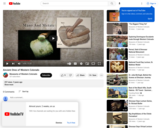
An overview of altering tables after creation
- Subject:
- Applied Science
- Computer Science
- Computer, Networking and Telecommunications Systems
- Material Type:
- Interactive
- Lesson
- Provider:
- Khan Academy
- Provider Set:
- Khan Academy
- Date Added:
- 04/11/2023

College, CTE and Adult Education course materials for course building and supplemental materials for Dual Enrollment environments.

An overview of altering tables after creation

These modules were originally presented to First Responders during a two-day workshop at the North Carolina Solar Center (now known as the North Carolina Clean Energy Technology Center) and were taught by National Alternative Fuels Training Consortium trained instructors. Three separate modules were used to educate them on the properties, technology, and safety precautions to take when working with alternative fuel vehicles utilizing gaseous fuels, biofuels, and electric drivetrains.

In the spring of 1918, the United States was embroiled in World War I, fighting alongside the English, French, and Russians against the Central Powers of Germany and Austria-Hungary. In total, 70 million men were at war on multiple fronts across Europe, Russia, the Middle East, and Northern Africa. The tide was finally turning for the Allies after a crushing offensive by German forces mere weeks earlier. Then, a fierce enemy intervenedan outbreak of influenza that would decimate entire regiments and towns, kill civilians and soldiers alike by the millions, and rapidly become a global pandemic. This disease weakened forces on both sides, changing not only the course of the war but also the economies and population stability of every affected nation. In the long term, this particular outbreak would inspire research on an unprecedented scale and lead to advances in science and medicine, forever altering our understanding of epidemiology. From the spring of 1918 to early 1919, no aspect of life remained untouched by the pandemic for Americans at home and on the front. This exhibition explores the pandemics impact on American life. This exhibition was created as part of the DPLAs Digital Curation Program by the following students as part of Dr. Joan E. Beaudoin's course "Metadata in Theory and Practice" in the School of Library and Information Science at Wayne State University: Bethany Campbell, Michelle John, Samantha Reid-Goldberg, Anne Sexton, and John Weimer.

Throughout the early twentieth century, women looked to break new ground in ways never before possible, and the sky literally became the limit. As the nation moved into the aviation age, many women saw flying as a way to break out of traditional societal roles. It gave women not just an opportunity for adventure and excitement, but a way to earn a living outside of the home that demanded respect. Aviatrix Ruth Bancroft Law described it, after defeating the cross-country distance record: "There is an indescribable feeling which one experiences in flying; it comes with no other form of sport or navigation. It takes courage and daring; one must be self-possessed, for there are moments when one's wits are tested to the full. Yet there is an exhilaration that compensates for all one's efforts." In this exhibition we explore the early history of aviation and the courageous women who took to the skiesaviatrixes who found freedom, broke new ground, and inspired generations of women along the way. This exhibition was created as part of the DPLAs Digital Curation Program by the following students as part of Professor Debbie Rabinas course "Information Services and Sources" in the School of Information and Library Science at Pratt Institute: Megan DeArmond, Diana Moronta, Laurin Paradise.

The stock market crash on October 29, 1929 -- known as Black Tuesday -- was the "worst economic collapse in the history of the modern industrial world." It spread from the United States to national economies across the globe. It ended a decade known for its high-spirited free-spending, called the Roaring 20s, and began almost 10 years of financial desperation that would touch nearly every citizen of the United States. The Great Depression caused bank closures and business failures and by its end, saw "more than 15 million Americans (one-quarter of the workforce)" unemployed. Herbert Hoover, president at the time, did not acknowledge the depth of the crisis and assumed that the American characteristics of individualism and self reliance would quickly bring the nation out of the disaster without a need for federal intervention. But, layoffs and financial desperation at the personal level were growing: "an empty pocket turned inside out was called a 'Hoover flag' [and] the decrepit shanty towns springing up around the country were called 'Hoovervilles'." Three years into the financial crisis, Franklin Delano Roosevelt, running on a platform of federal recovery programs called the "New Deal," easily took the presidential election of 1932.

One video clip, with embedded graphs, can be used to help students understand the mathematical relationships that describe simple harmonic motion.

This online activity shows how to use FRED, the Federal Reserve's free online economic data website, to analyze changes in real gross domestic product (GDP) and GDP makeup over time. Following simple instructions, you will locate spending data for the individual components of real GDP, and then combine them into a highly informative area graph. You will also use FRED's ability to stack data and see how trade—imports and exports—contributes to GDP. The resulting customized graph will let you see how economic output varies from year to year.

This set of anatomy videos illustrating parts of the human body was created under a Round Eleven Mini-Grant for Ancillary Materials Creation.
Topics include:
Axial Skeleton
Appendicular Skeleton
Muscles
Nervous System
Anatomy of the Senses

Middle School Paleontology Kit Module from Museums of the West in Grand Junction, CO. Lesson 3 on Evolution from the Middle School Paleontology Kit Module. The lesson introduces students to evolution. Students will learn the features that define dinosaurs, and use that information to determine the relationship between dinosaurs and birds based on anatomical features. They will think about if dinosaurs are alive today, and is an animal a dinosaur. Lessons 1, 2, 3 and 5 can be completed without access to the Fossil Kit from Museums of Western Colorado. Lesson 4 uses fossile from the kit. District 51 personnel can request a kit to complete Lesson 4. See this URL for an overview of the module and a link to the Teacher's guide to Paleontology: https://www.museumofwesternco.com/classroom-resources/stem-lessons/

Documentary covering history of ancient peoples living in the Grand Valley of Western Colorado. Includes information on the earliest inhabitants since at least 13,000 years ago compared to the first non-native homesteaders in 1881. Paleo Indian peoples from the ice age were originally hunter gatherers. Later peoples in the Archaic period developed farming techniques to cultivate the "Three Sisters:" corn, beans and squash. The Formative Period saw Ancestral Puebloans build cliff dwellings and adobe structures with pit houses and kivas in the Mesa Verde and Chaco Canyon regions. The dcoumentary discusses rock art, tools, religion and culture of these Native Americans and their relation to current tribal people.

Find out how angles and symmetry come into play in the game of pool in this video adapted from Annenberg Learner’s Learning Math: Measurement.

Students will learn about the Transit of Venus through reading a NASA press release and viewing a NASA eClips video that describes several ways to observe transits. Then students will study angular measurement by learning about parallax and how astronomers use this geometric effect to determine the distance to Venus during a Transit of Venus. This activity is part of the Space Math multimedia modules that integrate NASA press releases, NASA archival video, and mathematics problems targeted at specific math standards commonly encountered in middle school textbooks. The modules cover specific math topics at multiple levels of difficulty with real-world data and use the 5E instructional sequence.

An overview of Animating DOM with setInterval

Learn how to use jQuery to animate elements in custom ways, like animating their sizes, borders, and spacing, to whatever values you specify.

Now we'll pull everything together and explore how we calculate the position of a particle over time (frame by frame).

An overview of Animating styles with CSS animations

An overview of Animating styles with requestAnimationFrame

Learn how to use jQuery to show, hide, and toggle elements with animation effects.

Python es un lenguaje de programación general que es útil para escribir scripts para trabajar con datos de manera efectiva y reproducible. Esta es una introducción a Python diseñada para participantes sin experiencia en programación. Estas lecciones pueden enseñarse en un día (~ 6 horas). Las lecciones empiezan con información básica sobre la sintaxis de Python, la interface de Jupyter Notebook, y continúan con cómo importar archivos CSV, usando el paquete Pandas para trabajar con DataFrames, cómo calcular la información resumen de un DataFrame, y una breve introducción en cómo crear visualizaciones. La última lección demuestra cómo trabajar con bases de datos directamente desde Python. Nota: los datos no han sido traducidos de la versión original en inglés, por lo que los nombres de variables se mantienen en inglés y los números de cada observación usan la sintaxis de habla inglesa (coma separador de miles y punto separador de decimales).

Grâce à une analyse multidisciplinaire et décomplexée de notre relation à l’intelligence artificielle (I.A.), nous questionnerons nos usages quotidiens de l’I.A. Nous remonterons à l’origine historique de la notion d’« intelligence artificielle » afin d’en tirer des questions pratiques et des réponses concrètes, ainsi que des pistes de réflexion. Ensuite, nous aborderons les principes de base du fonctionnement de l’I.A. moderne pour y puiser une série de clés de compréhension. Enfin, nous nous arrêterons sur les craintes et idées reçues qui cernent le débat actuel autour de l’I.A. pour alors débattre collectivement de questions résolument actuelles.